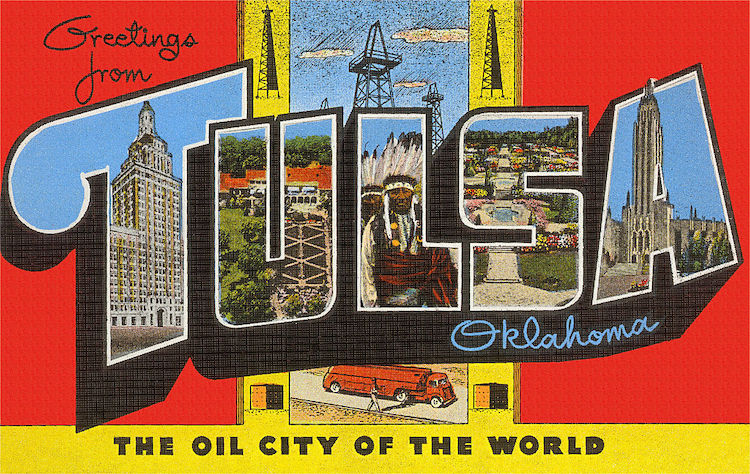
Postcards were first printed in the mid-1800s, and over the next century, hundreds of billions of them would be sent around the world. Between June 1907 and June 1908 alone, Americans exchanged 667 million of them. As author Lydia Pyne argues, the astonishing ubiquity of postcards made them the “world’s first social network.”
Practical and cheap, postcards were used for propaganda (organizations would create ones emblazoned with political messages), advertising (hotels, restaurants, and many other kinds of businesses all printed their own), and of course travel (tourists picked them up both to mail out and to take home as souvenirs). People sent postcards from exotic destinations and little-known locales alike, and the cards not only carried pictures of tourist hotspots like the Egyptian pyramids and Niagara Falls, but small-town high schools and single-stoplight intersections as well.
Both the cards themselves and the postage they required were inexpensive. A one-penny price for postcard stamps was set in 1898 and lasted until the middle of the 20th century. (Today, a postage stamp is 40 cents, still cheaper than the 58 cents it costs to send a letter.)
With an image on the front, and room on the back for just the address of the recipient and a few lines from the sender, postcards conveyed short and succinct messages — a hello, a holiday greeting, a promise to write more later. Postcards were a simple way for people to keep tabs on each other — an aesthetically-pleasing ping as to someone’s current whereabouts.
Postcards peaked in popularity around World War I. The rise first of telephones, portable cameras, and easy film developing, and then email, smartphones, and social media, steadily diminished their prevalence. Today, they are harder to find and far more rarely exchanged.
But there’s still a case to be made for the sending of postcards.
The receipt of any snail mail — the sight of hand-scribed writing sandwiched in what is otherwise a pile of soul-less junk — is always a delight. In a time where so much of our communication is ephemeral and abstract, something personal and tangible – something that the recipient can touch, that the sender also handled — creates a connection that the interchange of kilobytes can never match.
How charming a wholesale revival of the art of letter writing would thus be. But we have all made accommodations to the modern, hyper-fast communication economy; few have the attention span to pen a lengthy missive, and many will balk when faced with filling an entire page with writing.
With a postcard, brevity is built into the medium. You don’t have to have a lot of time. You don’t have to get creative. You don’t have to give a blow-by-blow update on your life. All you have to do is add in the textual equivalent of a wave of the hand. The gesture of sending the postcard is practically the entire message itself.
And what a nice message that gesture conveys.
All travel photos — whether postcards sent through the mail or photos shared on social media — carry a bit of the show-off-y “Look where I am!” pretense about them. People typically don’t mind this — they generally welcome the chance to see what you’ve been up to and are happy you’ve been having a good time. But the potential envy/FOMO-inducing effect of travel updates is better balanced with the fun of receiving them when they’re offered for someone’s eyes only, rather than broadcast willy-nilly to a mass of online followers.
In contrast to sharing travel photos on social media after a trip is done, which evinces the aforementioned performative quality alone, sending a postcard shows you were thinking warmly of a particular friend or family member, and doing so on the trip itself. While away, not only did your thoughts turn to someone back home, you then took the time to select and purchase a postcard, write a note, buy a stamp, and drop the card at a post office or mailbox. To the display of personal fun-having offered up by the sender is added a heartening, connective, metaphorical and sometimes literal message to the recipient: “Wish You Were Here.”
Yes, postcards are deserving of praise for how easy they are to send and how enjoyable they are to receive. But the very best thing about them of all is that they include no space for a return address. In a time when you can feel perennial guilt over your queue of unanswered emails and texts, the postcard is a most welcome and refreshing type of message: one which carries no expectation of response.
The post In Praise of the Postcard appeared first on The Art of Manliness.
0 Commentaires